Greek Cuisine- The gastronomy of Greece and traditional dishes
- Before arriving in Athens
- How to get to Athens - Getting to Athens by train, plane, car, ship or bus
- Public Transport in Athens - Getting around Athens
- Cost of Living in Athens
- Save money in Athens - Tips for living in Athens on a student budget
- Accommodation for students in Athens - Top tips and advice
- Athens neighbourhoods - The most important districts of Athens
- Greek Cuisine - The gastronomy of Greece and traditional dishes
- Where to eat in Athens - Best restaurants in Athens
- Athens Nightlife - Nightclubs and going out in Athens
- What to do in Athens
- Top 10 must-see attractions in Athens
- Top 10 Festivals in Athens
- Athens Beaches - The best beaches in Athens
- Day trips from Athens - Places to visit and excursions around Athens
- Athens in three days- What to see in Athens in three days
The gastronomic wealth of Greece is concentrated in a giant bouquet of natural flavours and aromas. The locality of the country has imposed a great influence on the variety of food and the ingredients of its traditional dishes. Greek gastronomy has a long history of more than 4,000 years, with particular features based on the pure and unique quality products of Greek land. It is actually said that Archestratus was the man who wrote the first recipe book in history back in 330 BC.
The Greek nutritional tradition is based on the Mediterranean diet and its high nutritional value. Dozens of scientific studies throughout the years have shown the positive effect of a balanced Greek diet on health, beauty and longevity. In addition, the Greek culinary culture has traditionally added an extrovert social dimension to the meals, combining the satisfaction of the taste with entertainment and communication amongst people, keeping alive the echo from the ancient feasts and symposiums.

A typical Greek breakfast consists of any type of coffee and something eatable, like some toast, a traditional pie or some bread with honey and tahini. While in a rush to work, or when they spend their day out of home, the Greeks usually prefer to buy a “koulouri Thessalonikis”: a baked dough ring with sesame that's been compared to German pretzels or Jewish bagels. This is the ultimate Greek street food breakfast, costing a little less than a euro. It's typically on sale from early morning in every public place or bakery, as vendors try to cash in on the hangover munchies of late-night revellers heading home and whoever leaves home without having breakfast and is looking for a quick and healthy bite.
There are no strict lunch hours in Greece. Normally you can have a meal between 14.00 and 17.00, depending on the time of the year. For example, on workdays, people normally eat at around 14.00, but, when on vacation, they might eat lunch as late as 17.00 or even 18.00. The dinner time is normally at around 20.00 - 21.00 o’clock, although this time differs depending on if the following day is a labour one or not. For example, people tend to have dinner later on weekends.
Appetizers
You can always find a long list of appetizers in a catalogue of a restaurant, as usual, people love picking on some food while waiting for the main dishes.
French fries with sauces such as tzatziki (yogurt with cucumber and garlic) or tirokafteri (spicy cheese sauce), fava (a hummus-like purée made with yellow split beans), melitzanosalata (sauce made of aubergine) or salads are usually the first choices.

The starters always come along with bread, and the most common use of it here is to dip it in the olive oil of the Greek salad while grabbing a bite of onions, tomato and feta cheese in order to achieve the perfect level of its taste. This action in Greek is called “papara”, and it means dipping in sauce or in olive oil. We always choose a salad among the starters, the most popular ones being the traditional Greek Salad- known worldwide as a combination of tomato, cucumber, onion, olives, green peppers and feta cheese-, a Green Lettuce or a Mixed one (carrot and cabbage) or even the Cretan Dakos, made of diced tomatoes, feta cheese and extra virgin olive oil on wet burley rusk.
Most of the recommended appetizers are deep fried, like cheese croquettes, fried saganaki cheese, zucchini, meat or tomato balls. Barbecued mushrooms with vinegar and dolmadakia (Greek stuffed grape leaves with rice) are also a tasty and really typical choice. Don’t miss the traditional mouth-watering Greek homemade pies which are made with any kind of ingredient (such as cheese pie, spinach pie, chicken pie, mushroom pie, meat pie or even creme pie) and they always have an excellent flavour!
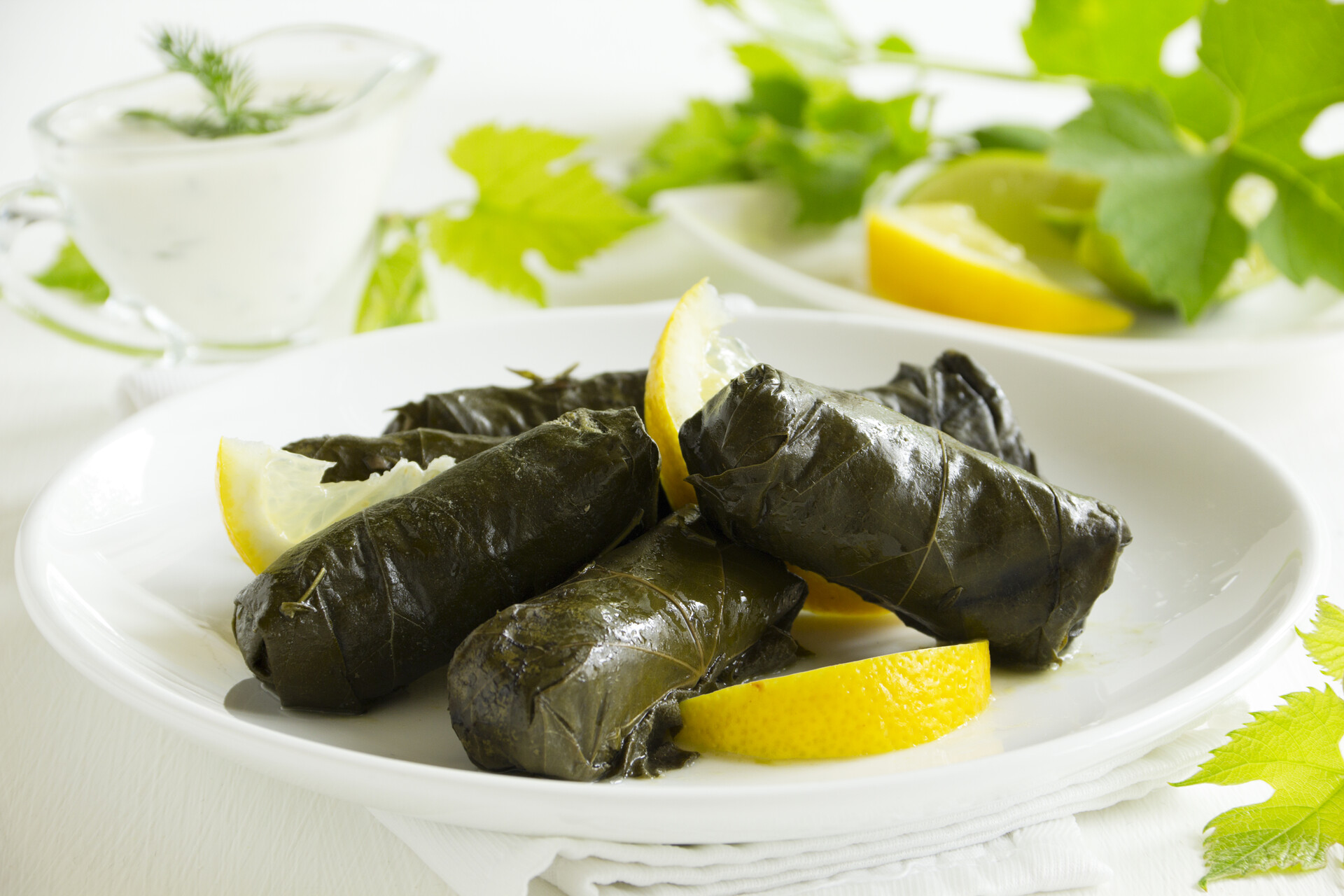
Main dishes
Moussaka: It’s probably the most well-known Greek speciality. It consists of 4 layers of ingredients, the ground one being deep-fried potatoes and then another one of fried aubergines. Over that, there is minced meat in tomato sauce and it is finally covered by a thick layer of bechamel.
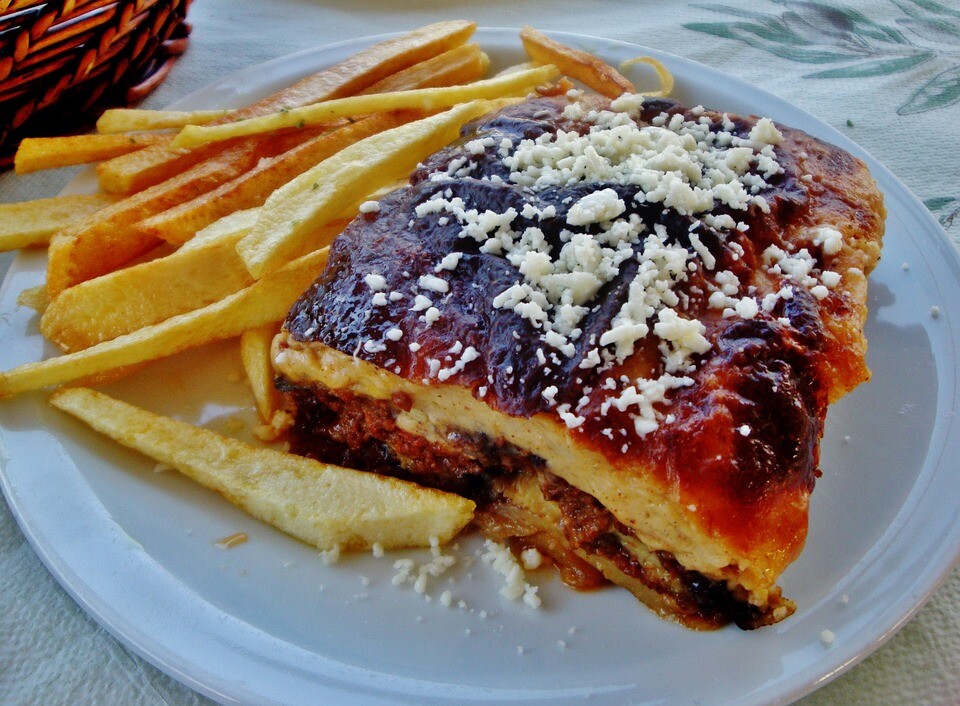
Pastitsio: The alternative of moussaka, usually for those who don’t like the aubergines. It consists of a layer of thick spaghetti with minced meat in tomato sauce, along with a thick cover of cheesy bechamel.
Gemista: This is also a dish made in the oven. It is basically a different kind of vegetables stuffed with rice and herbs, mostly tomatoes, red or green peppers, zucchini and aubergines. The stuffed vegetables with potatoes baked in the oven in the juices of the tasty vegetables.
Soutzoukakia Smyrneika: A tasty combination of meatballs in mouth-watering red sauce with a slight taste of cinnamon and cumin, served traditionally with white rice or fried potatoes.
Spetzofai: It’s a traditional dish of Pelion, a group of villages in the Greek mainland, consisting of fried aubergines, traditional spicy sausage and green peppers, dived in fresh tomato sauce.
Giouvetsi: It’s mostly a winter dish made of barley flour pasta, tomato sauce and beef or lamb chops and baked in earthenware for better taste.
Frikase: It’s usually a dish that is made on the cold winter days. It is basically a stew of lamb or beef meat along with green vegetables and a special sauce made of lemon juice and eggs.
Rabbit Stifado: Brought in Greece by the Venetians, stifado is another favourite Greek speciality consisting of whole little caramelised onions, rabbit meat and tomato sauce, all of them left to boil for hours with herbs till they acquire that exceptional taste.
Papoutsakia: Another typical dish made in the oven, named after a shoe (papoutsi in Greek), due to its similarity to an actual shoe. It’s actually an aubergine filled with minced meat and bechamel.
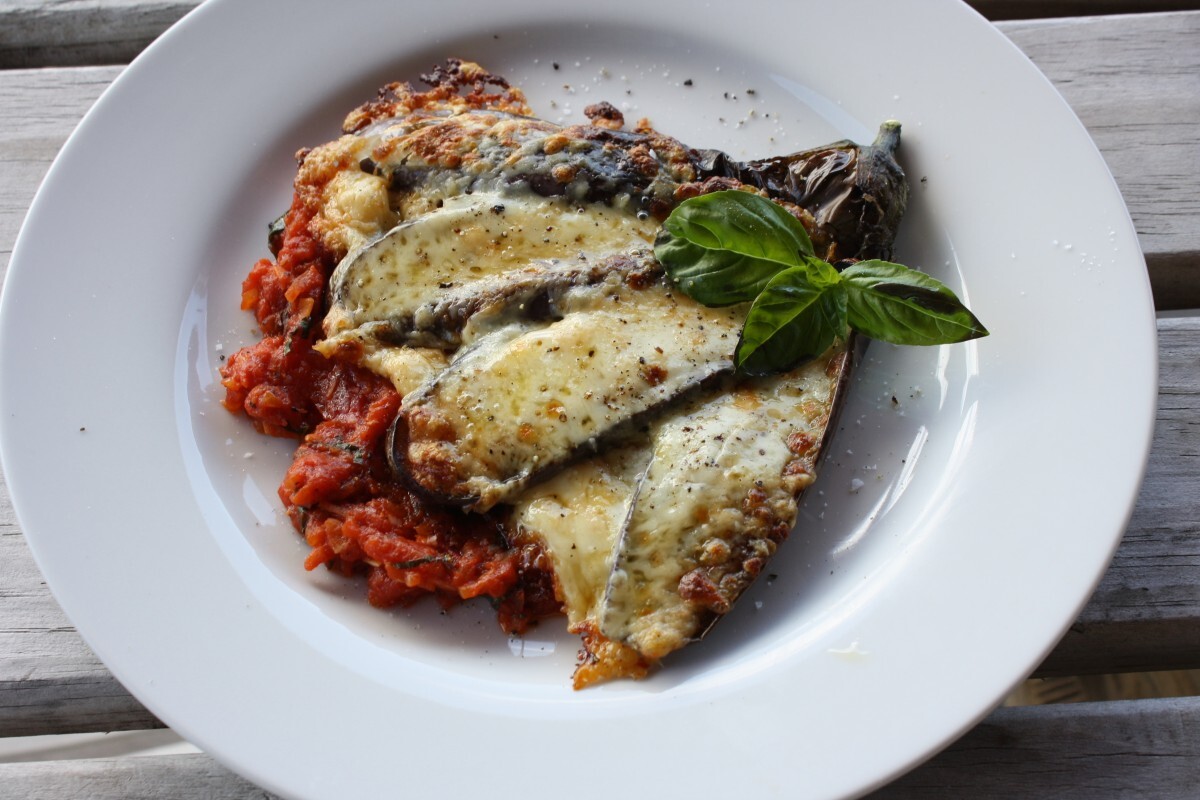
Souvla’s lamb: It’s the highlight of the Greek Easter. On Easter Sunday, every Greek family traditionally bakes a whole lamb in a big skewer, leaving it long hours turning over the fire until it’s fully baked. At the same time, they bake other kinds of meat in the exact same way, like pork meat with vegetables called kontosouvli, or kokoretsi, which is lamb's liver, lungs, heart and intestines. Greeks are so obsessed with these kind of meats, ‘tis souvlas’ as they call them, that they tend to eat them all year long when they make Sunday barbeques or even in traditional family tavernas, so if you ever bring yourself to one, make sure you don’t miss them!
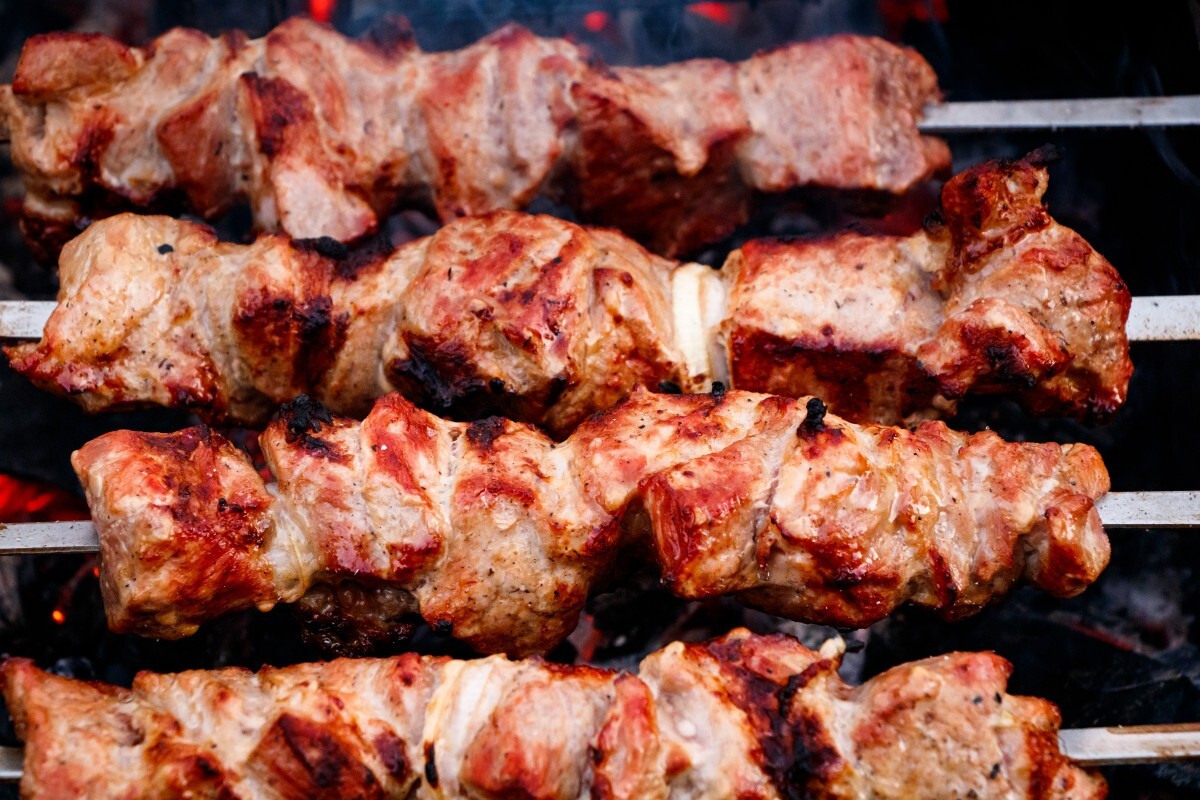
Bourdeto: Originating from the island of Corfu and being its most traditional dish, Bourdeto is a thick fish soup with potatoes and sauce with tomato and pepper.
Bakaliaros Skordalia: This is the ceremonial food for the day of the Annunciation. It is made of fried cod accompanied by a special potato and bread pure with an intense garlic taste.
Soupies me spanaki: Another dish of seafood, basically a stew combination of spinach and sepia.
Desserts
Greece has a great tradition in sweets, so the Greeks never lose a chance to eat one. It is a necessary food in their daily diet, and they tend to bring them as a gift for any occasion, like if anyone is sick, at parties, at a simple visit or even as a treat in their house as a way to welcome their visitors.
Baklava: Baklava is a rich, sweet dessert pastry made of layers of filo filled with chopped nuts or pistachio and sweetened and held together with syrup and butter. It is one of the most common desserts in Greece, although it originated from Asia.

Kataifi: The actual kataifi is a very fine vermicelli-like pastry used to make desserts. In Greece it is usually formed in a shape of a nest, filled with chopped nuts and dipped in sweet syrup.
Karidopita: It is a traditional Greek walnut cake drenched in a sweet syrup. Usually it is covered with a ganache-like layer of chocolate, and you can certainly find it in traditional villages or be served with a piece of karidopita as a typical treat at the end of a meal in a restaurant.
Galaktoboureko: It is basically a mouth-watering Greek dessert of semolina custard filled in filo pastry and poured with sweet syrup with a slight taste or orange or lemon.

Ravani: Another Middle- East delicacy hosted in Greece, ravani is a cake-like sweet made of semolina and yogurt and after it is baked in the oven, it is poured with sweet syrup. It is usually served with kaimaki ice-cream.
Loukoumades: This is a really traditional kind of sweet, that people used to eat in the past, and you can actually find places specialised in them all over Athens. Loukoumades are balls of fried pastry, traditionally covered with honey and sesame or any other kind of sauce or topping, like dark or white chocolate and cookies.
Halvas: There are different ways to cook this typical sweet. Normally, halvas are cakes of ground sesame seed sweetened with honey, or nowadays mostly sugar. The best commercial halvah comes from Thessaly and Macedonia. Greeks also make homemade halva with tahini, nuts, and sugar syrup. The term halvas is also used for semolina puddings, and these ones are normally served after a meal just to leave a sweet taste in your mouth.
Tsoureki: Usually made in the easter time, but actually found throughout the whole year in the bakeries, tsoureki is kind of a sweet, fluffy bread that is sold plain, or filled with chocolate.

Bougatsa: Mpougatsa is extremely famous in northern Greece but it can be found in every bakery, as Greeks usually eat it as breakfast. It is basically a pie (actually bougatsa is the name of the pastry) with a cream filling, and when it is served it is spilt with cinnamon and sugar. Most people combine it with cocoa milk, just to make sure that they will make a complete calorie-bomb!
Glika tou koutaliou: You can find it everywhere in Greece, as the elderly people tend to produce it in villages and it can be stored for a long time. The actual translation of the name is “Sweets of the spoon”, and that is because it is served in the portion of a spoonful because of their extra sweetness. It usually comes as a treat along with a traditional Greek coffee and it is made of any kind of fruit (as there is a wide variety of them) in a thick syrup. It is considered to be one of the most healthy kinds of sweets in Greece, and you can easily find them in any shop as a souvenir to take back to your country for your beloved ones.
Drinks
Wine: Both the mainland and the islands of Greece have been producing wine since ancient times. So Greece has a long history in winemaking, with extremely great tastes that are recently starting to become famous all over the world. The regions that produce the most well-known wines are Nemea, Santorini, Macedonia and Creta, the most well-known varieties being Assyrtiko, Agiorgitiko, Savatiano, Mavrodafne, and Roditis. Anyway, you can find numerous different varieties from all over Greece anywhere you go to Athens, it always depends on each one’s tastes to choose their favourite ones.

Beer: Greeks tend not only to import beer but also to produce it. Over the last decade, the Greek microbreweries have bloomed, producing excellent and high-quality beers, some of which can rival famous international quality beers. There are innumerable brands, some of the most well known being Mythos, Vergina, Fix, Zeos, Kaiser and Alfa, that you can choose to drink on a sunny day while enjoying “mezedes”- the Greek appetizers.
Retsina: It is a white wine that’s infused with sap from an Aleppo pine tree. It emerged from an ancient winemaking tradition that can be traced back as far back as the 2nd century BC. The well known Savatiano is Greece’s most planted white grape used primarily in the retsina wine, and you can still find bush vines growing all around (and in) Athens.
Ouzo: It is maybe the most famous Greek drink with a taste of anise that turns white when mixed with a little water or poured over ice. Traditionally, ouzo is both a welcoming drink and after-dinner digestive. It is best accompanied by seafood or vegetables like cucumber with vinegar and dairy products.

Tsipouro: Tsipouro is prepared – by distillation – from stemfyla (grape marc). In other words, pieces of grapes stem and anise seeds that are left after pressing the grapes for the new wine. This is also called strafyla or tsipoura, and in Crete, tsikoudia.
Tsikoudia/Raki: Tsikoudia is an integral part of Cretan tradition and hospitality. Every house has a bottle ready at any moment. It usually contains 37% alcohol and sometimes is served cold. Often it is offered as a digestive after a meal. It is distinguished from tsipouro because it is distilled only from tsikoudia (the pomace of grapes pressed for winemaking) without adding herbs.
Rakomelo/Oinomelo: As its name suggests, rakomelo is a fusion of tsipouro or raki with honey, with the addition of various flavours such as cinnamon, cardamom and others; usually, only cinnamon. Oinomelo is almost the same fusion, this time made of boiled wine instead of raki. These two fusions are really popular among students who wish to socialise in students places and have some drinks in the type of shot. You will find many spots in the centre of Athens, like at Psirri, where young people go and taste “mezedes” along with these kind of drinks in shots.
Coffee: If you are a coffee lover, you can feel blessed, because you are in a city where you can drink a different type of coffee almost every day. Greeks may not have invented coffee, but they have surely converted the action of drinking it into a national hobby. There are thousands of coffee spots all over Athens, either for sitting or for just grabbing a quick coffee to carry it on your way to work or shopping. Coffee fits all ages and every hour of the day. That’s why they use it so much in order to socialise with people and meet new ones. And that’s the reason we have made it a whole science, with so many different types of coffees that you will surely confused about which one to select. There are numerous types of coffee, hot and cold ones, that I will let you explore throughout your stay in Athens, but I will describe only the two Greek ones, just for you to know. The first one is the traditional Greek style coffee, a strong hot brew, served with foam on the top and the grounds in the bottom of the cup. Although it can be made in a different pot, the traditional small pot shown is the best. The other one is the well-known iced frappe, the summertime national drink of Greece, made from instant Nescafe coffee with water, with optional sugar and condensed milk.
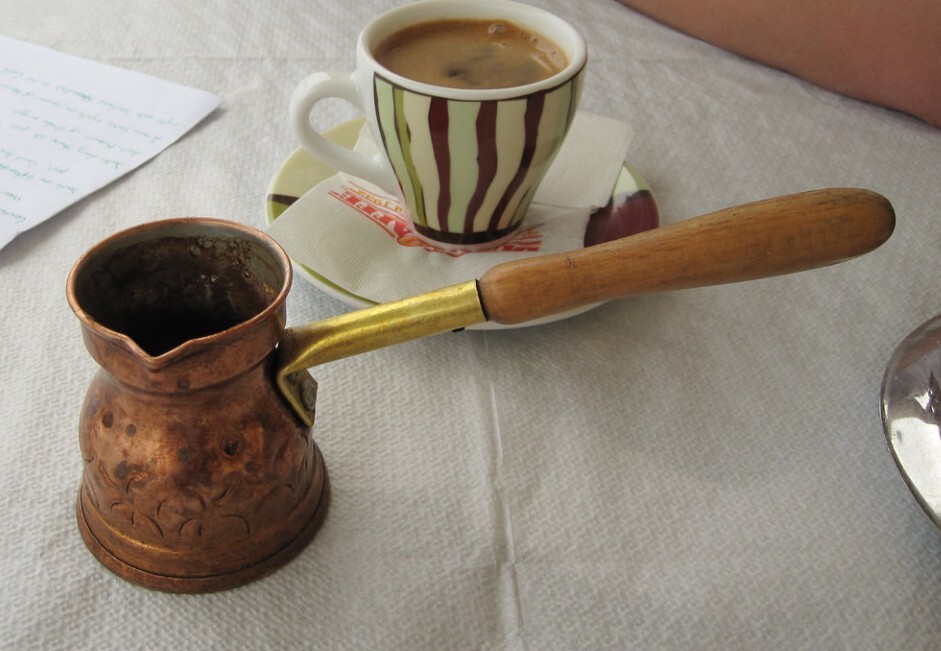
Water: Normally, people in Athens drink water directly from the tap, or even from springs which you can find in nature. It is also served for free in any restaurant or coffee place, and you can also ask the waiter to refill your glass in case you have drunk it all. In case you are eating or drinking a coffee out and they serve you bottled water, you will need to pay for it and it’s probably a tourist trap. So be careful: if the waiter asks you if you want bottled water or tap water, ask for the second one if you don’t want to pay for it.
- Continue to Where to eat in Athens - Best restaurants in Athens
- Return to Athens neighbourhoods - The most important districts of Athens
Photo gallery
Content available in other languages
Want to have your own Erasmus blog?
If you are experiencing living abroad, you're an avid traveller or want to promote the city where you live... create your own blog and share your adventures!
I want to create my Erasmus blog! →



























Comments (0 comments)